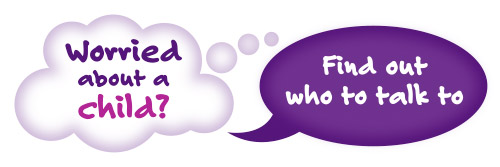How the Scottish Child Interview Model is improving experiences for children and young people
Topic: Child protection, Child sexual exploitation (CSE), Domestic abuse, Neglect, Sexual abuse, Voices of young people
Author: Jennifer Morrison


“Real change, enduring change happened one step at a time”, a quote by the American lawyer and jurist, Ruth Bader Ginsburg, is printed on my team mug that I now drink my coffee out of every morning. A few years ago, when I joined other social work and police colleagues in the National Joint Investigative Interviewing (JII) team, I just drank from a standard issue work mug. These days I take great delight in enjoying good coffee from cups stamped with motivational slogans that have resonated with my professional journey over these last seven years.
A trauma-informed approach to interviewing
This journey started in 2017, when the National JII team was established as a partnership between Social Work Scotland, Police Scotland, and local government, to comprehensively reform Scotland’s approach to interviewing child victims and witnesses who had been involved in crime, abuse, neglect or exploitation and were giving evidence. The aim was that interviews should be tailored to the individual needs of the child or young person, where they feel empowered to share their experienced and reduce the potential of further trauma.
Initiated on the back of a judicially-led research project called the Evidence and Procedure Review, the team drew upon national and international research and best practice evidence to develop an improved approach to the forensic interviewing of children that would be suitable for a Scottish context. At the end of 2019, after 18 months of research and development, a new model of practice for joint investigative interviewing was emerging, which became known as the Scottish Child Interview Model.
As a trauma-informed approach to joint investigative interviewing, the Scottish Child Interview Model keeps the needs and rights of children at the centre while capturing the child’s best evidence through improved planning and interviewing strategies. These are joint investigative interviews, which are jointly conducted by specially trained social workers and police officers, to support children and young people from three years old to 17 years old to be able to participate. During interviews, children’s rights need to be respected and upheld: every child makes a choice about participating in an interview, and they often collaborate with the interviewers during the planning stages to ensure they feel confident their needs are being understood and will be met. Often, this the first time the children will have had the opportunity to talk in detail about their experiences.
Enhancing knowledge and skills in multi-agency spaces
At the heart of the effectiveness of any joint investigative interview is good relational practice and the interviewers themselves, as what they bring to their interaction with the children or young people is their most valuable tool. For social work and police colleagues in the team, developing the Scottish Child Interview Model has involved collaborating with colleagues across the multiple agencies including those practitioners working in health, speech and language, and psychology services and legal professionals in both the Scottish Children’s Reporter Administration and the Crown Office. This has been essential to achieve the breadth and depth of knowledge and skills needed for interviewing when using the model. Staying open to learning from others has ensured the training for interviewers has remained up to date, incorporating learning from any of our evaluation activity in timely ways. For me, the principle of reciprocity has also been crucial to forging relationships within and across local multi-agency partnerships, with all of us focused on making the necessary system changes to accommodate the new model of practice.
Effective national and local leadership in change and improvement work has been just as important in implementing the model. In developing it, time has been taken to understand, respect and value local differences across police and social work partnerships. Sharing and identifying similarities in the challenges each other face can offer reassurance and, at times, solutions, or often just a space to be heard and understood.
This work needs a clear and dependable route for practice enquiries, training requests, practice evaluations and support if needed. Being available when you say you will be builds trust, so providing a consistent, responsive point of contact in our team for colleagues in practice was an important development.
Improving practice and experiences for children
The interviewers tell us that since the introduction of the Scottish Child Interview Model, they now understand how to effectively use trauma-informed principles in practice to support a child or young person to talk about what has happened. They also place a high value on the improved planning stages, helping them recognise and respond to a child’s needs during interview and provide a different experience of relationships; an experience which is characterised by important trauma-informed principles of safety, trust, choice and empowerment and collaboration. In turn, children tell us that they feel the interview is more about them and that those interviewing them care more about their wellbeing.
Work to implement the model has continued, and it is connected and has contributed to important policy and practice developments in wider children’s services in Scotland: The Promise, UNCRC incorporation, Bairns’ Hoose, the Age of Criminal Responsibility (Scotland) Act and implementation of the National Guidance for Child Protection in Scotland and the National Trauma Transformation Programme.
Reflecting on the journey of the Scottish Child Interview Model in 2025, I think that progress has been quite incredible. I am keen to acknowledge both the strengths and limitations and stay open to learning from people with lived and learned experience, in practice, academia and research. Leaning into support is as important as being part of a system that offers support to others, important if we are to stay engaged in wider improvement work and learning.
There is much to be learned, and relationships always need attending to. Our workforce needs careful nurture too. I have learnt that curiosity is key, if we stay interested in others, we can listen, learn, and work together. That way we can more likely ensure our endeavours have a tangible impact for the children and families we came into the social work profession to support. Not forgetting of course, and perhaps importantly, that space we leave for nurturing oneself - forever our most valuable tool.
The views expressed in this blog post are those of the author and may not represent the views or opinions of CELCIS or our funders.
Commenting on the blog posts: sharing comments and perspectives prompted by the posts on this blog are welcome.
CELCIS operates a moderation process so your comment will not go live straight away.


